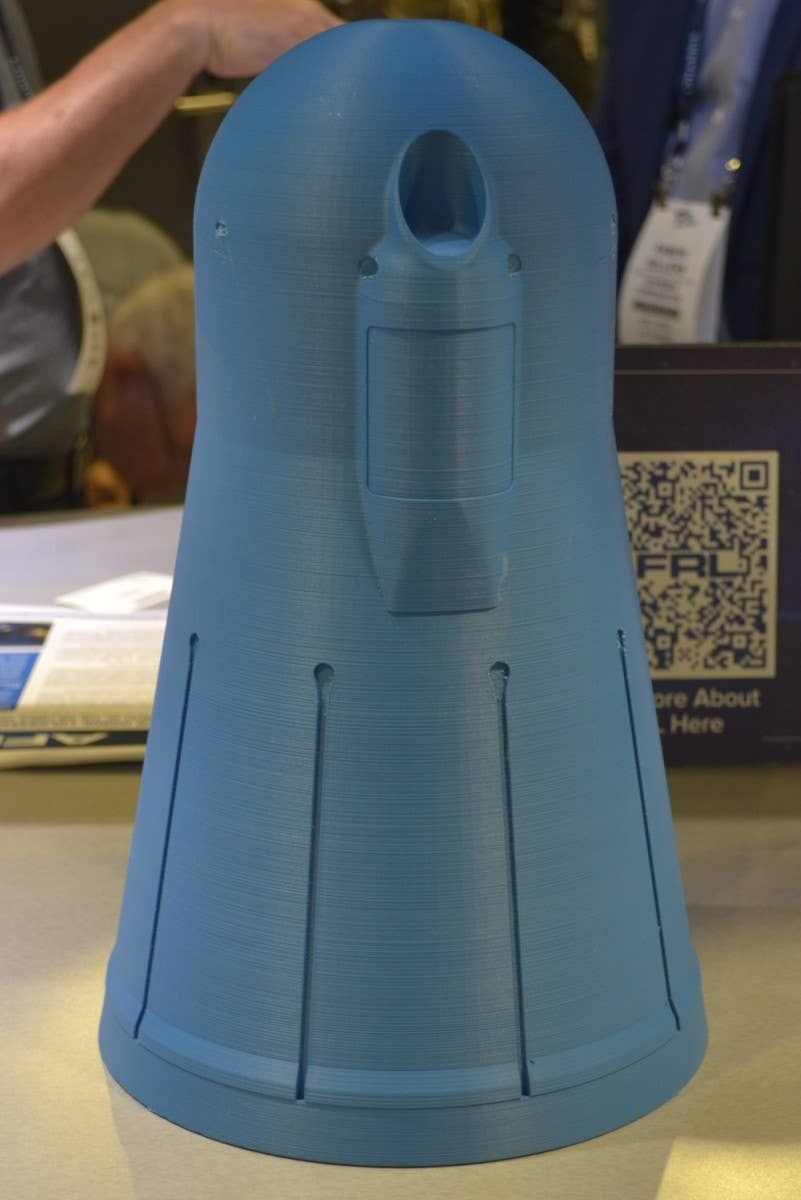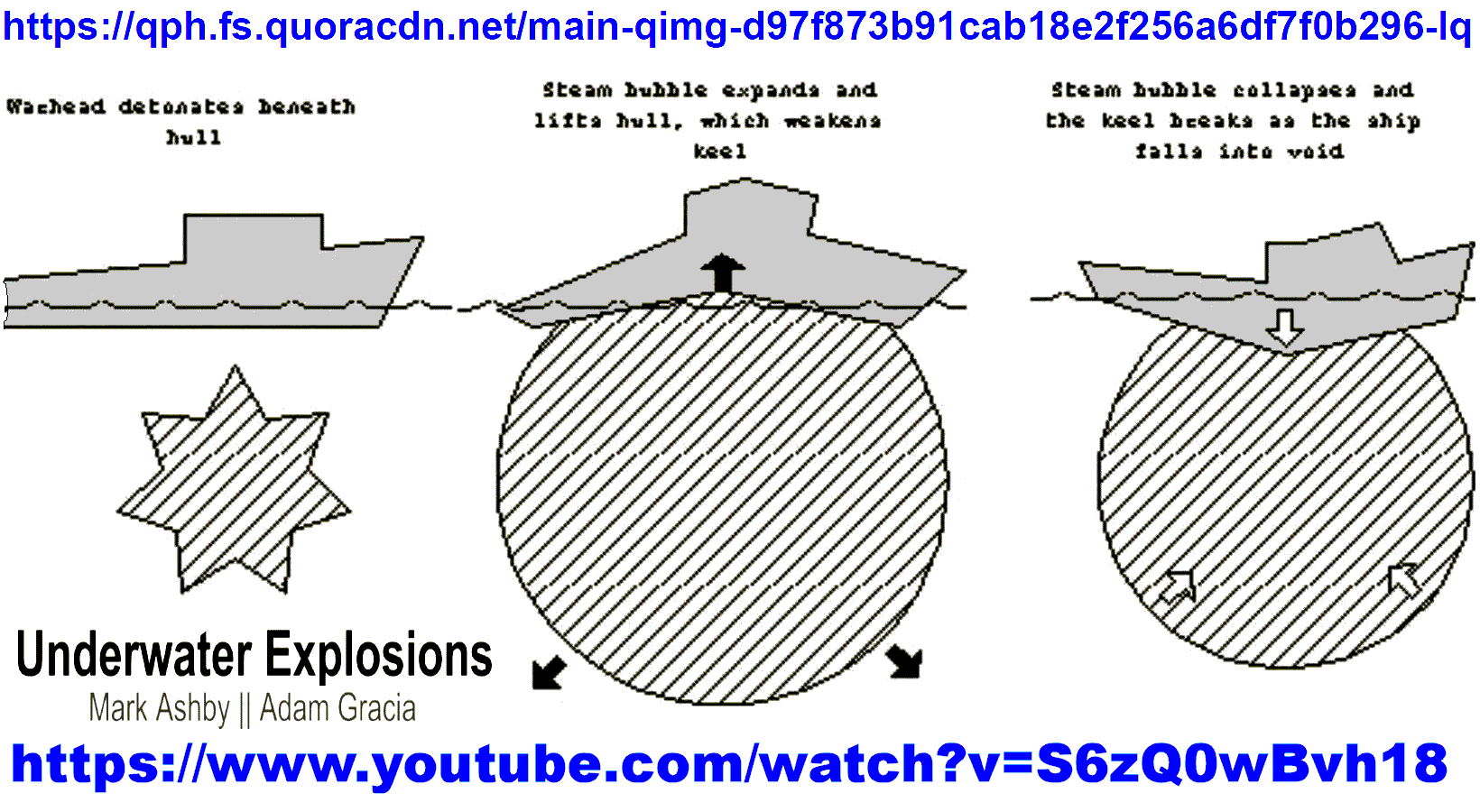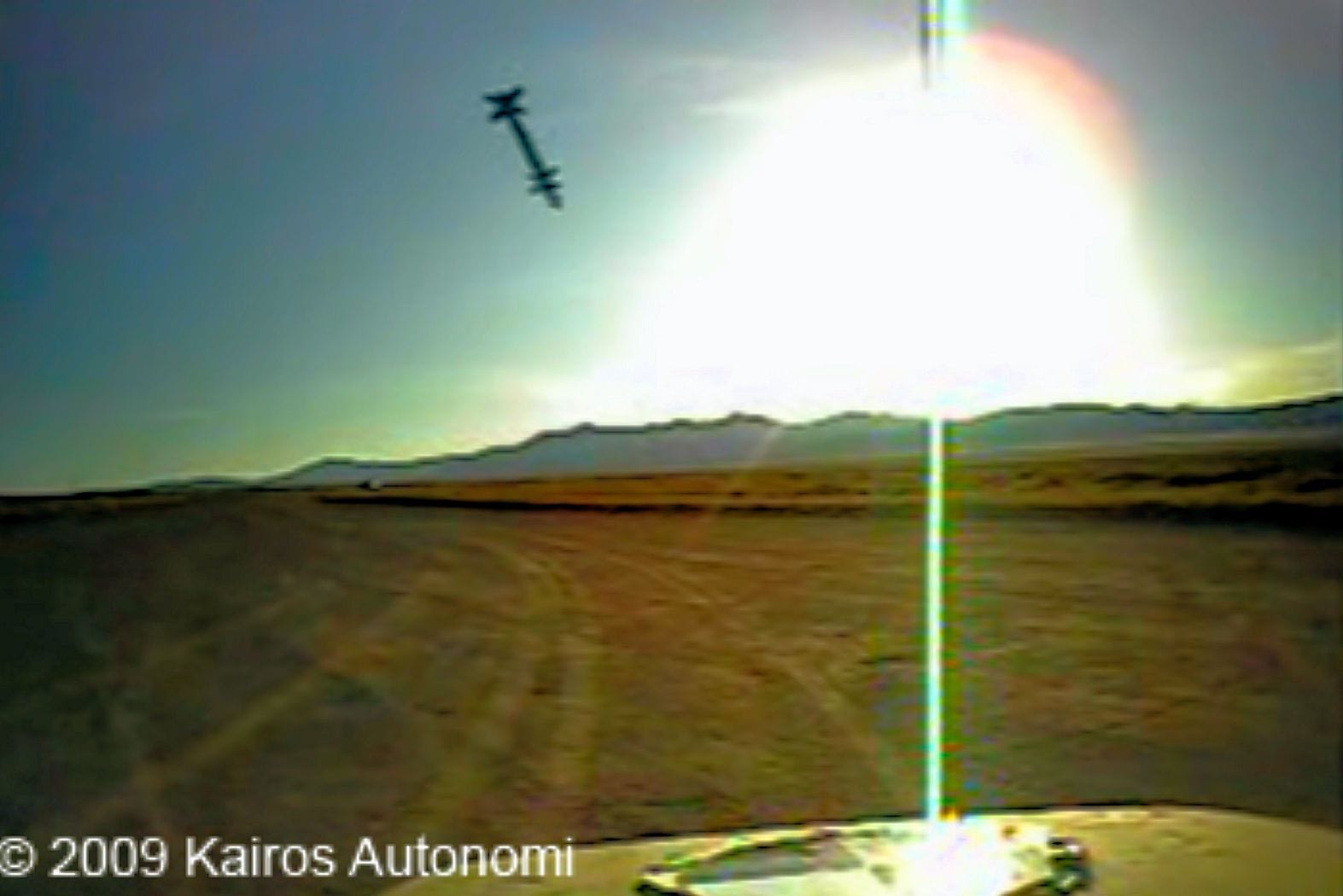America's new 2000lb "quicksink" bomb
Isn't this what the RAF did to Tirpitz?
Join Date: Jul 2008
Location: Australia OZ
Age: 75
Posts: 2,588
Likes: 0
Received 53 Likes
on
46 Posts
One summary says this: "How was the Tirpitz sunk? It took three years and multiple operations, but in 1944 30 RAF Lancaster bombers armed with Tallboy earthquake bombs finally sunk the Tirpitz. The ship took two bombs, suffered internal explosions and soon capsized. OTHERWISE: German battleship Tirpitz - Wikipedia
One summary says this: "How was the Tirpitz sunk? It took three years and multiple operations, but in 1944 30 RAF Lancaster bombers armed with Tallboy earthquake bombs finally sunk the Tirpitz. The ship took two bombs, suffered internal explosions and soon capsized. OTHERWISE: German battleship Tirpitz - Wikipedia
Who has the chunk of Tirpitz in their Mess now?
Join Date: Jul 2008
Location: Australia OZ
Age: 75
Posts: 2,588
Likes: 0
Received 53 Likes
on
46 Posts
It was reported in July 2005 that the US Navy using an F/A 18 and a JDAM bomb scored hits within two meters of a moving "Land" target.
If you can hit a moving Truck or Tank I have to think hitting a Ship is entirely feasible.
How you achieve a "near miss" on purpose might be the harder part of the problem.
However....if you "miss" and actually "hit" the ship with a 2,000 pound bomb....that alone is gong to cause the ship a serious Damage Control exercise that may or. may not be successful.
So why the debate about whether said bomb will work or not if employed in combat?
Would we be. having the same discussion if it had been the RN and the F-35?
If you can hit a moving Truck or Tank I have to think hitting a Ship is entirely feasible.
How you achieve a "near miss" on purpose might be the harder part of the problem.
However....if you "miss" and actually "hit" the ship with a 2,000 pound bomb....that alone is gong to cause the ship a serious Damage Control exercise that may or. may not be successful.
So why the debate about whether said bomb will work or not if employed in combat?
Would we be. having the same discussion if it had been the RN and the F-35?
It was reported in July 2005 that the US Navy using an F/A 18 and a JDAM bomb scored hits within two meters of a moving "Land" target.
If you can hit a moving Truck or Tank I have to think hitting a Ship is entirely feasible.
How you achieve a "near miss" on purpose might be the harder part of the problem.
However....if you "miss" and actually "hit" the ship with a 2,000 pound bomb....that alone is gong to cause the ship a serious Damage Control exercise that may or. may not be successful.
So why the debate about whether said bomb will work or not if employed in combat?
Would we be. having the same discussion if it had been the RN and the F-35?
If you can hit a moving Truck or Tank I have to think hitting a Ship is entirely feasible.
How you achieve a "near miss" on purpose might be the harder part of the problem.
However....if you "miss" and actually "hit" the ship with a 2,000 pound bomb....that alone is gong to cause the ship a serious Damage Control exercise that may or. may not be successful.
So why the debate about whether said bomb will work or not if employed in combat?
Would we be. having the same discussion if it had been the RN and the F-35?
The USAF conducted a test on a moving Freighter....barely moving and certainly not maneuvering ship.....but certainly devastating results.
I looked back through the Thread and did not see this video listed....if it is a repeat my apologies.
I looked back through the Thread and did not see this video listed....if it is a repeat my apologies.
Last edited by SASless; 27th Sep 2022 at 20:49.
A sudden hole appearing under the ship is a very effective way to create a hell of an amount of damage, and unfortunately can and does happen naturally all the time. The deciding factor appears to be two converging wave patterns and what determines the damage is related to the how the basic wavelength of each pattern relates to the size of the ship and where the convergence takes place on the ship.
My old man [Marine Chief Engineer] had very personal experience of this in the south pacific in transit from Fiji back to Oz on his BP Tanker in the early '80's. One quiet sunday morning, about half way back to Sydney, in his words - they fell into a hole in a nearly flat calm ocean which broke piping off from the fo'csle all the way back to the pump room justb ahead of the accomodation and in the engine room broke all three of the auxiliary "Percy Paxman" diesels and their attached generators free from their bases, wrecking the coupling on the running unit. The main engine mounting plate got cracked and the bow plating got split so badly he had to weld shut some watertight doors until they were able to limpback into port in Oz as none of the pumps on board coul keep up with the flooding rate. It took a fortnight's work in Sydney to get the ship fit for travel to Keppel in Singapore where they had another three week's in dry dock to repair the worst of the damage. His take on it was that if they'd been hit slightly further back, he'd have been lucky to have been paddling.
His bright side was that he did manage to get across the Sydney Harbour bridge a couple of times without having to pay the toll and he developed a liking for a particular restaurant in Singapore that he was very disappointed to learn, years later from me that it was now a block of flats after I visited for my work.
My old man [Marine Chief Engineer] had very personal experience of this in the south pacific in transit from Fiji back to Oz on his BP Tanker in the early '80's. One quiet sunday morning, about half way back to Sydney, in his words - they fell into a hole in a nearly flat calm ocean which broke piping off from the fo'csle all the way back to the pump room justb ahead of the accomodation and in the engine room broke all three of the auxiliary "Percy Paxman" diesels and their attached generators free from their bases, wrecking the coupling on the running unit. The main engine mounting plate got cracked and the bow plating got split so badly he had to weld shut some watertight doors until they were able to limpback into port in Oz as none of the pumps on board coul keep up with the flooding rate. It took a fortnight's work in Sydney to get the ship fit for travel to Keppel in Singapore where they had another three week's in dry dock to repair the worst of the damage. His take on it was that if they'd been hit slightly further back, he'd have been lucky to have been paddling.
His bright side was that he did manage to get across the Sydney Harbour bridge a couple of times without having to pay the toll and he developed a liking for a particular restaurant in Singapore that he was very disappointed to learn, years later from me that it was now a block of flats after I visited for my work.
Join Date: Dec 2006
Location: US
Posts: 162
Likes: 0
Received 0 Likes
on
0 Posts
Video and stills have been on the web for a number of years. Kairos Autonomi is the old company website (nothing to do with me personally) then click on media, scroll down, you will see one of my favorite photos, an LGTR, 5 ft above the ground, behind the target.
There are a couple of videos of it as well.
Join Date: Jul 2008
Location: Australia OZ
Age: 75
Posts: 2,588
Likes: 0
Received 53 Likes
on
46 Posts
Way back when, I was involved in the testing to determine why the guided munitions were falling short on moving targets in theater. Spent time at Fallon on the range, with two F 18ís circling overhead, then trying to hit an autonomous Nissan Sentra performing a long run along the wreck runway, with a turn at each end.
Video and stills have been on the web for a number of years. Kairos Autonomi is the old company website (nothing to do with me personally) then click on media, scroll down, you will see one of my favorite photos, an LGTR, 5 ft above the ground, behind the target.
There are a couple of videos of it as well.
Video and stills have been on the web for a number of years. Kairos Autonomi is the old company website (nothing to do with me personally) then click on media, scroll down, you will see one of my favorite photos, an LGTR, 5 ft above the ground, behind the target.
There are a couple of videos of it as well.
Kairos Autonomi: Multimedia - Existing Vehicle Autonomy for Unmanned Ground Vehicles
This is the sensor for the quicksink
https://www.thedrive.com/the-war-zon...tails-revealed
AFRL has now confirmed that the Quicksink seeker, the model of which is seen below, is a dual-mode system that combines a radar seeker with an imaging infrared (IIR) camera
The combination of the new multi-mode seeker and the JDAM tail kit turns the bomb into an all-weather anti-ship weapon. When employed, the weapon uses the tail kit to first glide to the general target area, using coordinates inputted prior to launch from the launch aircraft via onboard sensors or from an off-board sensing platform. Once it approaches the target area, the weapon then shifts to the Quicksink seeker to locate the target ship and determine its speed and heading. The use of an independent seeker system means that weapon could potentially still lock onto the target if it appears within the envelope of the radar and IIR camera, even in a GPS-degraded environment that imposes limits on the initial cueing.

Last edited by golder; 5th Oct 2022 at 00:28.
Join Date: Dec 2006
Location: US
Posts: 162
Likes: 0
Received 0 Likes
on
0 Posts
Thanks for sharing laser guided weapon.. I went to the website
Kairos Autonomi: Multimedia - Existing Vehicle Autonomy for Unmanned Ground Vehicles
This is the sensor for the quicksink
https://www.thedrive.com/the-war-zon...tails-revealed
AFRL has now confirmed that the Quicksink seeker, the model of which is seen below, is a dual-mode system that combines a radar seeker with an imaging infrared (IIR) camera
The combination of the new multi-mode seeker and the JDAM tail kit turns the bomb into an all-weather anti-ship weapon. When employed, the weapon uses the tail kit to first glide to the general target area, using coordinates inputted prior to launch from the launch aircraft via onboard sensors or from an off-board sensing platform. Once it approaches the target area, the weapon then shifts to the Quicksink seeker to locate the target ship and determine its speed and heading. The use of an independent seeker system means that weapon could potentially still lock onto the target if it appears within the envelope of the radar and IIR camera, even in a GPS-degraded environment that imposes limits on the initial cueing.

Kairos Autonomi: Multimedia - Existing Vehicle Autonomy for Unmanned Ground Vehicles
This is the sensor for the quicksink
https://www.thedrive.com/the-war-zon...tails-revealed
AFRL has now confirmed that the Quicksink seeker, the model of which is seen below, is a dual-mode system that combines a radar seeker with an imaging infrared (IIR) camera
The combination of the new multi-mode seeker and the JDAM tail kit turns the bomb into an all-weather anti-ship weapon. When employed, the weapon uses the tail kit to first glide to the general target area, using coordinates inputted prior to launch from the launch aircraft via onboard sensors or from an off-board sensing platform. Once it approaches the target area, the weapon then shifts to the Quicksink seeker to locate the target ship and determine its speed and heading. The use of an independent seeker system means that weapon could potentially still lock onto the target if it appears within the envelope of the radar and IIR camera, even in a GPS-degraded environment that imposes limits on the initial cueing.

The last round they had managed to stop the vehicle, from the range tower through the big eyes, the round dropped short, but closer than the previous ones had been, the vehicle continued for a few feet, then stopped dead in its tracks.
When we finally got out there to where it was, turned out tthat when the LGTR hit, it was probably a couple of feet behind, the small charge went off, and between ground dislodged by the initial impact, further displaced by the charge, being directly in line with the exhaust pipe of the vehicle, it was sufficient to plug the last four inches or so, which in turn explained why it only went so far, then stopped abruptly.
A true soft kill.






